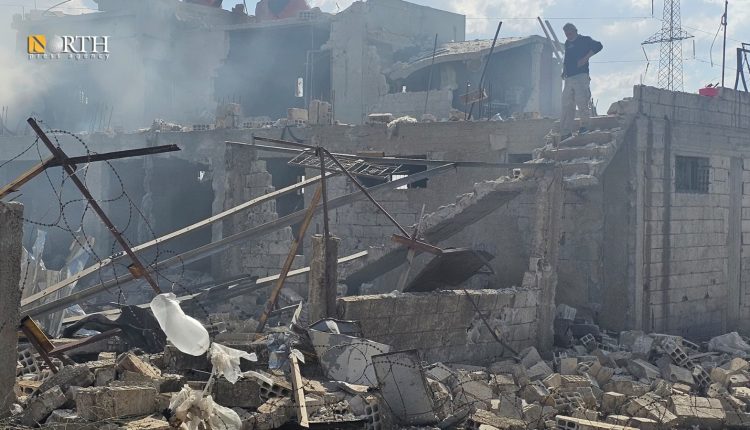Four Killed in Suspected Drone Strike near Suwayda Amid Rising Tensions in Southern Syria
By Kardo Roj
SUWAYDA, Syria (North Press) – Four individuals were killed on Friday in a mysterious explosion west of the southern Syrian city of Suwayda, in what local sources suspect was a retaliatory drone strike, following gunfire directed at an unidentified aircraft.
According to a North Press correspondent in Suwayda, the incident occurred on a farm located on the western outskirts of the city. Witnesses reported hearing heavy gunfire from a 14.5 mm machine gun shortly before a powerful explosion struck the area. Preliminary reports suggest the blast may have been caused by a drone, allegedly operated by Israel, although no official confirmation has been made.
The identities of those killed have not yet been publicly released. Medical teams from the Syrian Arab Red Crescent transported the bodies to Suwayda National Hospital, where authorities are working to verify their names and affiliations. Additional casualties were reported, but no specific figures were confirmed at the time of publication.
The attack comes amid heightened tensions in southern Syria, particularly involving the Druze-majority province of Suwayda, which has witnessed a recent uptick in security incidents and political unrest. The region has remained largely outside the direct influence of both the Damascus-based government and the opposition-controlled northwest, with local actors maintaining relative autonomy.
Recent days have seen an increase in Israeli military activity across southern Syria, with officials in Tel Aviv citing threats posed by Iranian-backed militias and extremist groups operating near the Golan Heights. While Israel rarely acknowledges specific operations, it has carried out hundreds of airstrikes in Syria since 2011, primarily targeting Iranian-linked assets and weapons transfers.
However, this latest incident appears to diverge from standard patterns, with the strike reportedly following direct fire aimed at a hovering aircraft—a rare engagement suggesting a more volatile ground-to-air interaction.
Residents of western Suwayda told North Press that tensions in the area have been rising in recent weeks amid rumors of drone surveillance and increased military overflights. The area where Friday’s strike occurred is known for its agricultural activity and relative isolation, though recent clashes involving unidentified armed groups have fueled local anxieties.
While no armed faction has claimed responsibility for firing on the aircraft, local sources indicated that individuals at the scene may have acted independently or in response to perceived threats. The broader context remains murky, with speculation swirling around whether the strike was part of a targeted Israeli operation or an isolated reaction to gunfire.
The lack of clear affiliation of the deceased raises additional concerns about the potential for escalation and misidentification in a region marked by fragmented loyalties and limited central control.
Although Suwayda has largely remained on the periphery of Syria’s frontlines, the recent spike in violence threatens to undermine local stability. The province, home to a significant Druze population, has traditionally distanced itself from the wider conflict, but it now finds itself increasingly drawn into regional dynamics involving Israeli security policy and the presence of non-state armed groups.
Observers note that any sustained military activity in the area—particularly by foreign actors—could further complicate the delicate balance in southern Syria. While the SDF and AANES are not operational in this region, they continue to emphasize the importance of a stable, demilitarized environment across all of Syria to prevent the spread of extremist elements and reduce civilian suffering.

